William Whiskerson visits a dairy farm to find out how milk is produced, bottled, and transported to the shops.
Narrator: Here comes William Whiskerson in his amazing travelling globe.
William Whiskerson: Greetings adventurers, I am William Whiskerson, the famous mouse explorer.
Narrator: William is in the countryside. He can see green, grassy fields everywhere, but which part of the United Kingdom is he in?
William Whiskerson: Cheese phone, reveal my location.
Narrator: The cheese phone shows William where he is in the world.
Cheese phone: Hi, William, today you're in the South West of England in a county called Somerset.
BEEPING
William Whiskerson: Look, I've got a message coming through on my cheese phone.
Theo: Hi, William, I'm Theo. Do you want to come and meet me on my farm?
William Whiskerson: A farm? That sounds like a real adventure. Lock the location, cheese phone.
Narrator: The map shows William where to meet Theo.
William Whiskerson: Explorers, away!
Narrator: On his way, he passes through lots of green fields full of grass. There's Theo.
William Whiskerson: Hi, Theo!
Theo: Please to squeak you, William. This is my dad, Guy. Would you like to see his farm?
Guy: Hello, William.
William Whiskerson: Hello. Yes, I'd love to.
Theo: Would you like to see all my friends?
William Whiskerson: Ah! You mean the cows?
MOO!
Theo: They're called Holstein-Friesians.
William Whiskerson: Holstein-Friesians. How many cows do you have?
Theo: 330.
William Whiskerson: You need a lot of fingers and toes to count them!
Narrator: Most of the cows on Theo's farm are female. You can tell because they have udders for making milk.
William Whiskerson: Why do you have so many females?
Guy: We have lots of female cows because they produce milk we can sell to the shops.
Narrator: Farmers who produce milk like Theo's dad are called dairy farmers. Theo offers to show William around the farm. First, Theo takes William to a special shed where baby cows, called calves, are housed.
William Whiskerson: The calves are very little. How old are they?
Theo: Up to 12 weeks.
Narrator: Cows only start making milk when they've had a baby, so lots of calves are born on the farm all year round. Female calves are called heifers and they'll grow up to be dairy cows and produce milk just like their mums.
Theo: Quick, William, I've got something really exciting to show you! Come on!
William Whiskerson: Explorers away!
Theo: William, look. She's had a baby. Oh!
Narrator: This little baby calf has just been born and its mummy is licking it clean.
William Whiskerson: How long does it take the calf to stand up?
Theo: Only about 30 minutes.
Narrator: Very slowly, the little calf stands up for the first time. William can't believe his eyes. What a special moment! During the day, the grown-up cows stay out in the fields but at night, and when the weather's bad, they're taken into the cow sheds. While the cows are still in the fields, their sheds can be cleaned out.
Guy: OK, you two, we need to clean out these cow sheds.
William Whiskerson: What's this stuff on the floor?
Theo: It's cow poo.
Narrator: The cow dung has to be cleaned out every day.
William Whiskerson: This cow dung's very smelly. Where does it all go?
Narrator: The cow dung is moved into something called a slurry lagoon. Theo takes William to look at it. It's a huge pool of cow dung. Cow poo might be smelly, but it's full of nutrients which are very good for the soil. The dung is spread on the fields to help grow grass and crops, which are fed to the cows. When they aren't eating fresh grass, they eat something called silage, a mixture of different crops which have been grown on the farm. The silage is kept in a silage pit.
William Whiskerson: Look at that! It's like a giant mountain! What is it?
Guy: It's cow food. We've got wholecrop wheat and we've got ryegrass and red clover that we call grass silage.
Narrator: The machine cuts big blocks of silage. It's then added to the other ingredients in the feeder wagon. The scales let the farmer know exactly how much silage to put in. It's then mixed up, ready to feed the cows. The cows on Theo's farm are organic. This means all the food they eat has been grown without chemicals. The cows think it's delicious. It's milking time now. The cows are moved into the collecting yard, where they wait to be taken into the parlour for milking.
William Whiskerson: Can we go into the parlour to watch the cows being milked?
Theo: Yes, come on, then.
Narrator: The cows enter the milking parlour in small groups. They're then cleaned before milking begins.
William Whiskerson: Why is there a hole in the floor
Guy: That's the parlour pit. We stand in it to reach the cows' udders.
Narrator: A machine called a milking unit milks the cows. It has cups that fit onto the cows' teats.
William Whiskerson: Look! I can see the milk!
Narrator: The milking unit squeezes the teats on the cow's udder - this causes the milk to flow out. It travels down a pipe into a barrel called a collecting jar. When the milk stops flowing, the milking unit drops away.
William Whiskerson: How much milk does a cow produce each day?
Guy: We're producing about an average of 30 litres a cow.
Theo: And that's 60 of these!
William Whiskerson: What happens to the milk now?
Guy: It's pumped next door where it's chilled and stored in the bulk tank, ready for collection.
Narrator: The tank stores the milk and keeps it cold, ready to be collected. A special lorry called a tanker comes every day to take the milk to the dairy. The delivery man attaches a pipe and pumps the milk into the tanker. The tanker has to be very big to hold all the milk. The cows on Theo's farm produce 7,000 litres a day. The dairy is only six miles away, so the milk gets there quickly and stays fresh. William and Theo go to the dairy to meet Steve, who shows them around. They have to wear special clothing to stop germs spreading. The milk is heated up in a machine, which kills off any harmful germs and makes it safe to drink. The milk is then poured into plastic bottles. The lids are placed on the bottles and heat is used to seal them shut. This stops air getting inside the milk and keeps it fresh. A label is then added.
William Whiskerson: What happens to our milk now?
Factory worker: It's going to the shops for people to buy.
William Whiskerson: Our milk's been on quite a journey.
Factory worker: Yes, it has. From the farm to the dairy to the customers in less than four days.
Theo: Would you like to come back to the farm and try some milk?
Factory worker: Oh, yes, please! Explorers away!
Narrator: Back at the farm, Theo pours William a lovely glass of milk.
William Whiskerson: Thank you.
HE SLURPS
William Whiskerson: Ah! Thanks, Theo! That was squeak-a-licious!
Narrator: Theo shows William lots of other things made from milk - yoghurt, cream, butter and even cheese. He then gives William a cow to remind his of his dairy farm adventure.
William Whiskerson: Thanks, Theo. I've had a lovely time on your dairy farm. Squeak you later!
Theo: Squeak you later, William!
Narrator: Can you remember where William went today? William visited his friend Theo, who lives on a dairy farm. Can you remember how the cows were milked? They were herded together and taken into a milking parlour. Here, a machine collected their milk. Where did the milk go next? To the dairy, where it was bottled. William loved his glass of milk. Squeak-a-licious!
William Whiskerson: Now it's time to fly, explorers! We're off on another adventure!
Narrator: See you soon, William!
Video summary
William Whiskerson meets Theo on his family farm.
He learns how female cows make milk and then takes a trip around the farm where he sees a calf being born.
He visits the cowshed and watches it being cleaned.
He learns about organic farming and how the cow's dung is used to grow crops for the cattle to eat.
He then sees the cows being milked in the parlour.
Next, William follows the milk as it is transported to the local dairy.
He sees it being bottled, ready to be sent to the shops.
He learns how milk can be used to make cheese, yoghurt and cream.
Teacher Notes
After viewing the clip, the children could use model animals to create a bird's eye view of the farm William Whiskerson visited.
Pupils could use a freeze-frame of the map shown in the clip to help them build up their model, cutting grassy meadows from green paper and ploughed fields from brown paper or corrugated card.
They could make hedges and trees from twigs. Remind pupils to model other features they have seen in the clip too, such as the cowsheds, a silage pit and a slurry lagoon.
The children could add buildings modelled from boxes and toy tractors, diggers, trucks and tankers to complete the landscape.
Finally, children could check the labelling on a pint of milk from a local supermarket to find out where it came from.
This clip will be relevant for teaching Geography.
This topic appears in KS1/KS2 in England and Northern Ireland, Knowledge and Understanding of the World Foundation Phase in Wales and Early/1st/2nd levels in Scotland.
Life on the Isles of Scilly. video
William Whiskerson travels to the Isles of Scilly, a group of islands lying off the Cornish peninsula of Great Britain.
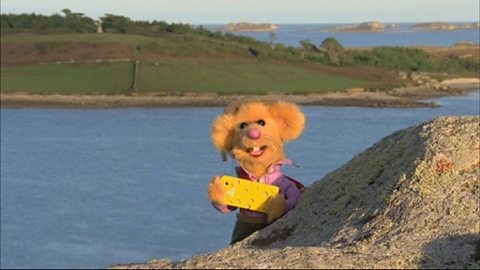
Transport, travel and landmarks of London. video
William Whiskerson meets Kulala who lives in London, and visit some of the key landmarks.
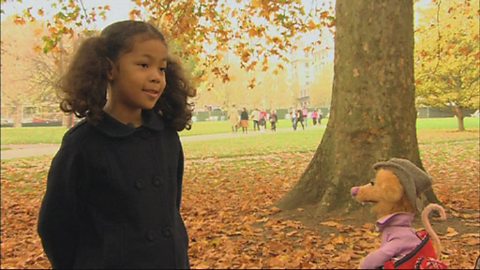
Jobs and tourism in a seaside town. video
William Whiskerson visits the seaside town of Weymouth. He explores the beach and sees tourists on the esplanade.

How honey is made. video
William Whiskerson meets Sophie and Ben and they visit a bee farm.
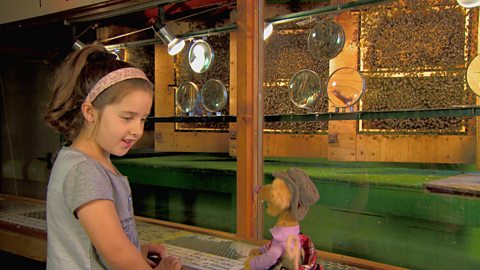
Travelling on a canal boat. video
William Whiskerson meets Sophie and Harry on their narrow boat and they take a trip along the Birmingham and Worcester canal
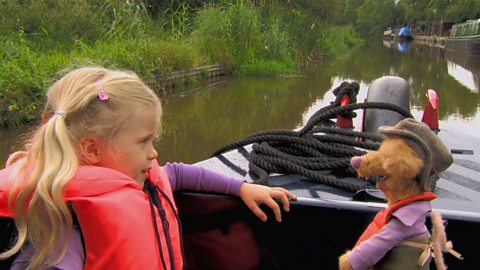
Exploring a cave in Yorkshire. video
William Whiskerson meets Emily and together they explore a cave in Yorkshire.

Living in an eco-village. video
William Whiskerson meets his friend Ewan, who lives in an eco-village in Shropshire.
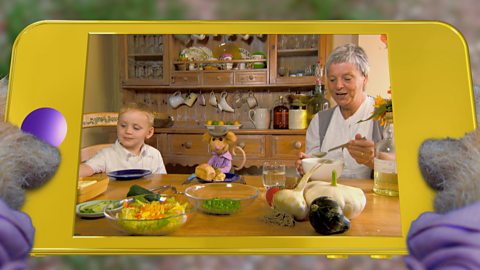
A visit to the Caledonian Forest. video
William Whiskerson travels to the Highlands of Scotland to meet his friends Lewis and Breya.
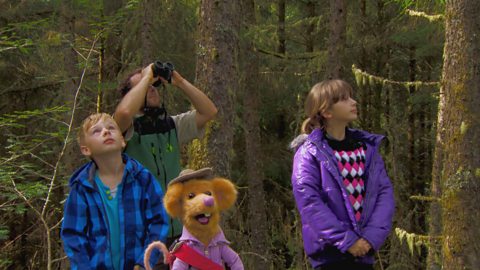
Fossil hunting along the Jurassic Coast. video
William Whiskerson meets a fossil expert and learns how fossils were formed from the remains of plants and animals that lived millions of years ago.
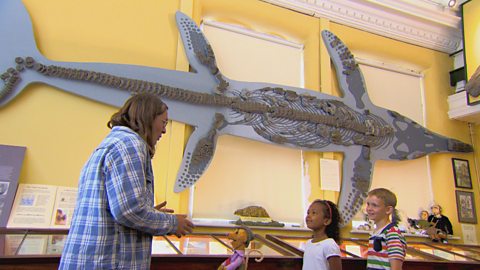
Mountains and electricity. video
William goes to Scotland to see his friend Euan and visit a power station deep inside a mountain.
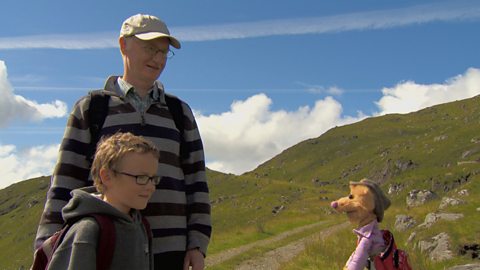
Growing and picking orchard fruit. video
William Whiskerson meets Lucy and Laura in an orchard. He learns about the different types of fruit that grow there including berries, cherries and apples.
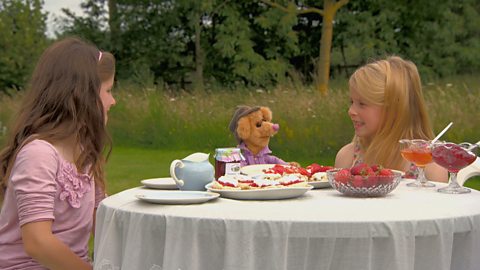
╠²